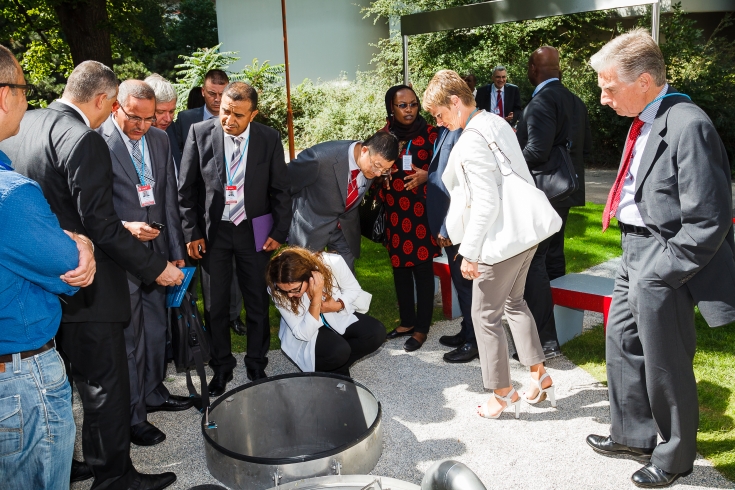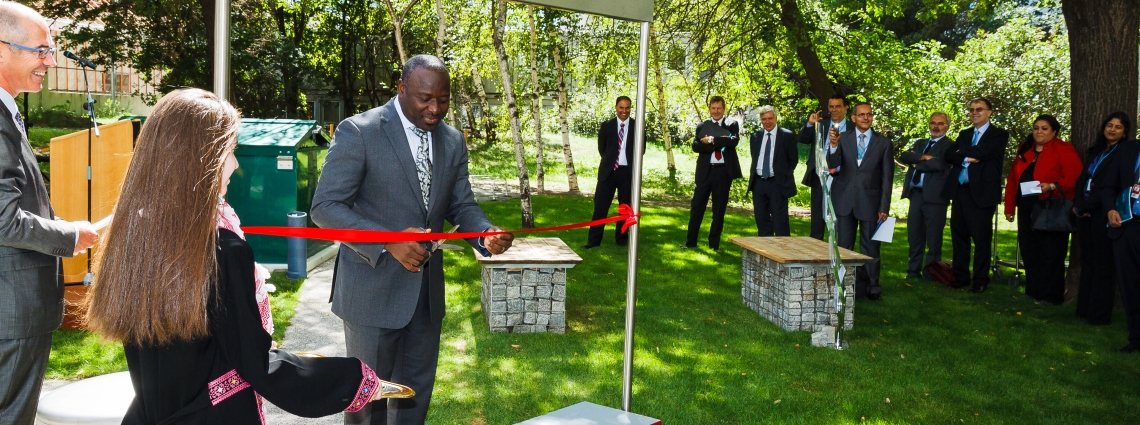New infrasound and seismic
test-bed and training facility unveiled
test-bed and training facility unveiled
Vienna - 18 August 2014

CTBTO Head Lassina Zerbo opens the new seismic and infrasound testing facility
The facility helps us to make sure station operators are well trained. People can also come to see first-hand what our seismic and infrasound stations are like
Jacques Pretorius is part of the CTBTO’s maintenance team that built the test facilities. “The main advantages will be seen when we can ship and install equipment that we know is working properly,” he said. Natalie Brely, CTBTO Chief, Monitoring Facilities and Support section said “this new test facility will answer a strong call for optimising our resources.”
The CTBTO is building and will maintain some 250 waveform stations that are part of the International Monitoring System’s (IMS) global network of stations that monitor the planet for any sign of a nuclear explosion. The stations are so sensitive that they can detect events from halfway around the world. Seismic waves from the nuclear test announced by the Democratic People’s Republic of Korea in February 2013 were detected by stations in Brazil and in the Antarctic.

People gather to look at the underground seismic vault
We have stations scattered all over the world and trying to maintain these stations to a high data availability level of 98% is not an easy task. Before we ship equipment to any station in a very remote location, we need to be very sure that the equipment is functioning correctly.
18 Aug 2014
